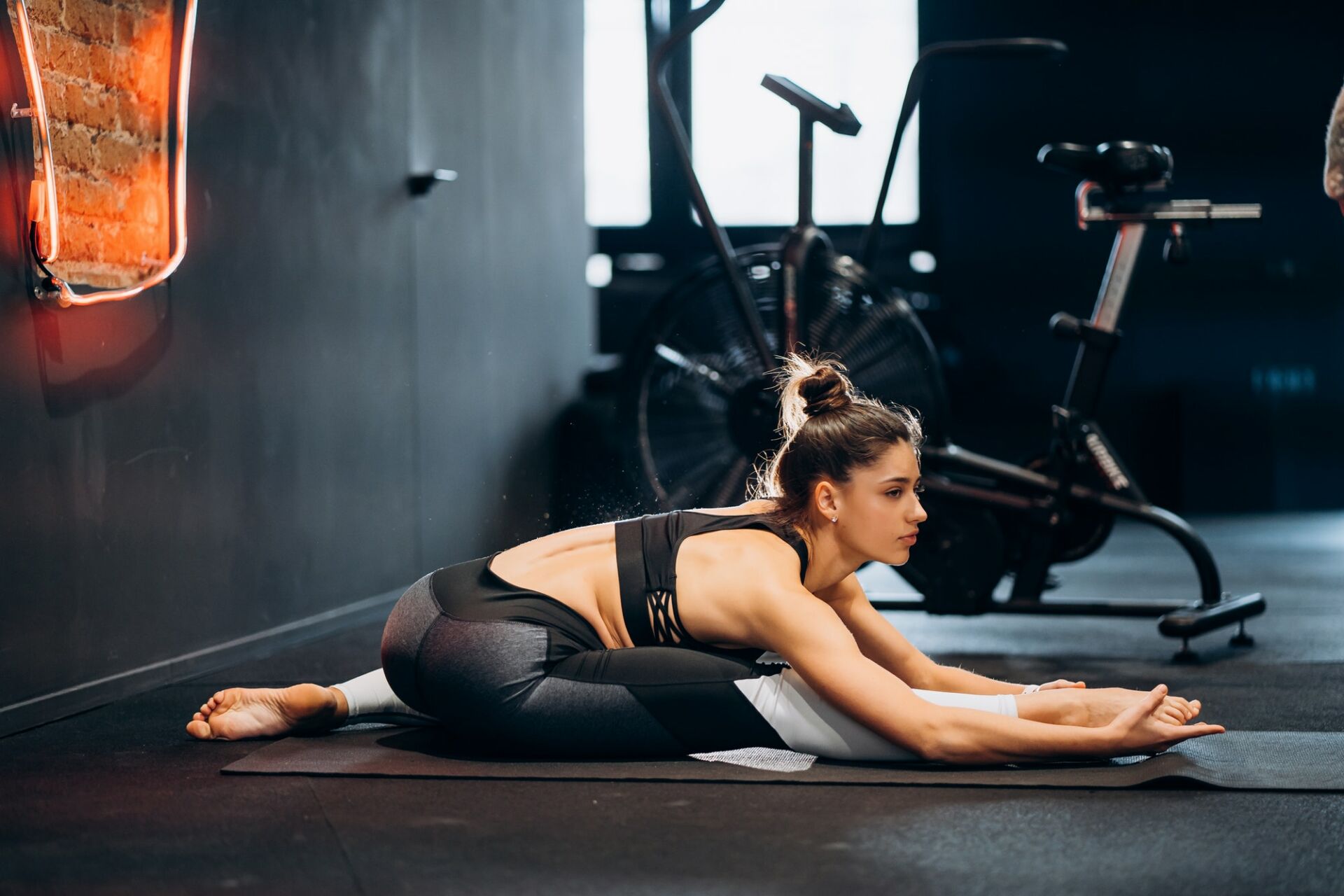Table of Contents
ToggleToday, our main focus is flexibility.


When you hear “flexibility” you usually think yoga, ballet, or perhaps gymnastics? And yes, if a person is to practice any one of these they are most likely flexible.
Flexibility is important for building and/or maintaining a durable and strong body. Therefore, if you wanna be fit, you should be flexible, at least to a certain degree. Being flexible is not only useful in injury prevention but we also need it to fix muscle imbalances, posture problems, and many more nuisances. This is precisely why we feel that flexibility and stretching require some additional explanation.
Read on to learn a bit more about what flexibility training is, how you should approach it, when you should and shouldn’t implement it, and also what to expect from it. Let’s get to it.
Definition
To kick things off, let’s provide a simple definition of flexibility.
Having a flexible body means that your joints have a wide range of motion. The more flexible the joints the longer this range becomes. For example, if you want to touch your toes standing upright you need to have flexible hips and hamstrings first. Both the joints and muscles need to provide a certain level of flexibility if you are to touch your toes standing. In this particular example, you should elongate your hamstring by performing stretching exercises. Other tasks require different mobility training, and so forth.
Our muscles contract and relax in a given range of movement. Depending on your joints and muscles, this range of movement can be short, long, or just “neutral” (average level of mobility). We all have a certain range of movement (“ROM” for short) for every muscle group. By nature, some are shorter and some are longer. ROM is subject to your anatomy, which exercises you perform, previous injuries you’ve suffered, and many more factors… An important point that should be made is that joints and muscles can be elongated by physical activity.
Yes, we’re all predisposed to a certain body type by sheer genetics. That is something which we cannot choose. But, that doesn’t mean you can’t do anything about your flexibility. Regular flexibility workouts can greatly impact the range of motion of almost any muscle group, especially if done early in life, while the muscles and joints are still developing. This is precisely the reason why many gymnasts and ballet dancers start training at a young age.
Flexibility training can be added to your resistance training regimes, at the end of your workout. However, you can also have flexibility training a couple of times per week when you feel like it, apart from other types of training. They usually last about 20 minutes which isn’t a lot of time. Performing stretching exercises daily shows the most results.
Types of flexibility
The types of flexibility most commonly referred to are static and dynamic.
Static flexibility is attained by performing the static types of stretching exercises. These exercises are the ones we usually think of when it comes to stretching. They imply holding your body in a certain position (which elongates the muscle) and keeping it that way for a brief period of time. As a rule of thumb, people like to stretch their muscles for at least 30 seconds, but it could also be for a minute or two.
If you haven’t stretched your muscles before then you won’t be able to hold static stretches for longer time periods because of pain and discomfort. No reason to worry. Muscles adapt rather quickly. Performing daily workouts will allow for longer, painless stretches.
Dynamic stretches, on the other hand, are slightly different. They involve moving in such a way that the targeted muscle has to go through its full ROM. Such exercises are useful for warming up the joints and muscles. Although, they require the same amount of care since they can stress your joints if you become careless about the way you perform them. Only pain-free movement should be performed and this goes for any type of exercise, not only flexibility. Your ROM can’t improve after two or three stretching sessions. It takes some time to become flexible, just like it takes time to develop your endurance.

Shortening vs Lengthening
We’ve called flexibility the counterpart of resistance training since, in its essence, flexibility training is like the twin brother of resistance training. During stretching sessions, you’re basically doing the opposite of what you do when you go for strength training. You’re not shortening but lengthening your muscles.
Now, this calls for some serious attention. You should be very careful when choosing the body part you want to elongate. Why? Muscle imbalances. Save yourself precious time by analyzing your body before venturing into flexibility training.
By default, as we’ve already mentioned, some muscles on your body are short and others are long. Generally, you don’t want to stretch out muscles that are already long. Not only is there no point in stretching them out further (given you already have optimal flexibility), but you also might put yourself in trouble by doing so. Having extremely elongated muscles leads to muscle imbalances. Having muscular disproportion causes all kinds of problems for the rest of your body and they usually result in injuries of some sort.
Muscles that are stretched out more than they should be need resistance training. And, vice versa, muscles that are too short ought to be lengthened with flexibility training. Finding the middle ground is what keeps the body healthy. It is very difficult to have a “perfect” balance of all the muscles in your body. Our bodies have their own ways, but that doesn’t mean you can’t give it your best shot.
Pay attention to the state of your body. There are simple drills that you can do in order to find out whether or not the muscle group you wish to stretch is already flexible enough or not. After you determine which ones are short and which are long, you may pursue the balance you need.
Benefits
There are plenty of benefits to flexibility training. Apart from keeping your muscles intact and balanced out, stretching exercises may also release stress, promote a healthy posture, aid in your sports performance, release muscle tightness (which usually cause cramps) and so forth.

Athletes who follow a flexibility routine benefit greatly regardless of their sport. Tennis, basketball, swimming? All of the above require regular stretching sessions. An increase in your ROM, attained by stretching regularly, can not only prevent a number of possible injuries but also significantly improve the efficacy of your performance on the court or at the gym.
Sources
https://people.bath.ac.uk/masrjb/Stretch/stretching_3.html
https://health.ucdavis.edu/sportsmedicine/resources/flexibility.html


